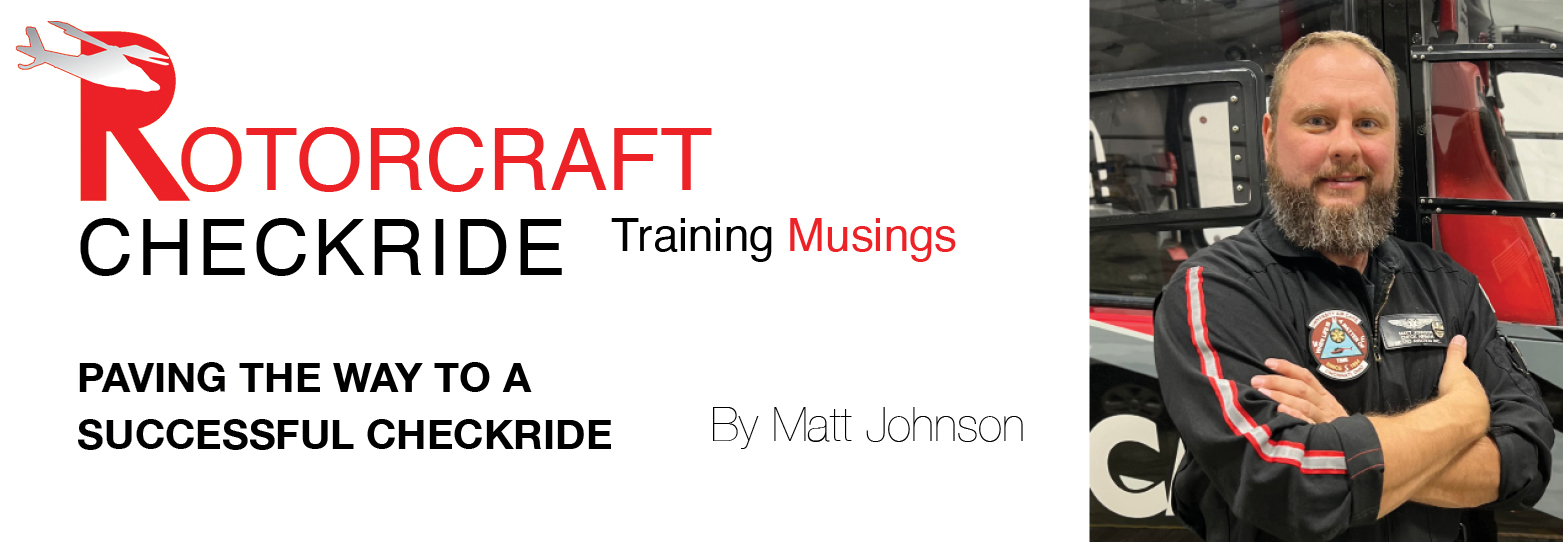|
May
05
2025
|
|
Posted 214 days ago ago by Admin
|
|

By Matt Johnson
Let’s PAVE a road, if you will. One that will bring about success on the big day. If you haven’t heard of the FAA's infamous “PAVE” checklist, then maybe you aren’t ready for checkride day, so make sure you read up and have a clear understanding. It can be found in numerous locations, primarily in the FAA's Pilots' Handbook of Aeronautical Knowledge and Risk Management handbook. The PAVE checklist provides a means to identify hazards using four convenient hazard “buckets.” Using all four checklist categories, or “buckets,” before a flight captures most hazards usually encountered.
Safe flight is about mitigating risks, and a successful checkride is no different, requiring numerous factors and risks to be mitigated, and this is where you can use the PAVE checklist to help. PAVE is an acronym that stands for Pilot, Aircraft, enVironment, and the External Factors. Even a non-aviator, can see how these four factors relate to safe, successful outcomes, but let's take a deeper dive into how this checklist can help with your practical exam.
The Pilot, that’s you! Are you truly prepared for the practical exam? Oftentimes, a reckoning of truth is needed here. On numerous occasions, I have had applicants end up with a less than desirable outcome just because they wanted to “give it a shot” knowing that they were maybe bogged down with things like; finals at school, death of a pet, loss of a job, car trouble, etc. just to name a few of the things that have been discovered after the less-than-ideal outcome. Sure, stress on checkride day is normal, but be honest with yourself if something prevents you from performing at optimal capability. It is your day, and you walk in the door as a “pass.” It is up to you to keep that status! You will undoubtedly be asked about the “IM SAFE” checklist during your exam, which also holds a lot of merit for checkride day. If you don’t meet the requirements of that acronym for any reason, show good aeronautical decision-making and contact your designated pilot evaluator and inform him or her that you have to postpone.
The Aircraft is next on the checklist. This goes without saying, but show up with an airworthy helicopter to your exam. Are all of the required inspections up to date on the aircraft? Are they labeled correctly so that you can find them efficiently? Remember, there are no “phone a friend” options here!
What about aircraft documents? Are they correct for the aircraft? Nothing is more embarrassing to an applicant (and aircraft owner) when an examiner arrives for a practical test only to find the aircraft registration is expired or has been mismatched with another fleet aircraft.
Next up is the enVironment. Have you visited the location where you will do your exam? For many, the exam happens at your “home” airport, but often, applicants find themselves visiting an entirely new environment. Make a point to fly in and out of the airport with your instructor to ease your nerves. If you are required to fly through a Class B, C, or D airspace to get to your evaluator, that says a lot. I’ve seen applicants avoid relatively mild airspace just because of mic-fright. This too says a lot not only about the applicant but the applicant's instructor as well. You aren’t coming to a practical exam to be certified to fly in only class G and E airspaces, but the entire NAS. Be prepared. Another factor with the environment is the weather ; start looking 7 days out at the weather with close attention being given to the 48-24 hour timeframe before your scheduled practical exam. If the weather is “so-so” and is causing you stress, it’s probably best to reschedule.
Last up is External Factors, and this one is huge. Self-induced pressure has resulted in more than a few notices of disapproval in my tenure as an evaluator. Applicants got “in their head” and couldn’t get out, some even resulting in discontinuances due to illness. Remember, it is your day! You don’t necessarily have to inform the world on social media that you are headed to your checkride. Why put that unnecessary pressure on yourself?
Let’s face it: Flying is not possible without risk. That is why we push pilots of all levels to learn mitigation strategies from the very onset of their training. The same goes for practical exams when it comes to proper planning for the event (using PAVE). For a successful outcome, you must keep yourself (as the Pilot), the Aircraft, the enVironment, and external factors into total consideration. By the way, that is what we all three want (you, your instructor, and the DPE): a successful outcome!
About the Author: Matt Johnson has been an FAA designated pilot examiner for over a decade, conducting exams ranging from Private to ATP and CFI. Additionally, he is a single-pilot IFR air medical captain and Part 135 instructor and check airman. He can be reached at [email protected] and via Twitter @HelicopterDPE
READ MORE ROTOR PRO: https://justhelicopters.com/Magazine
WATCH ROTOR PRO YOUTUBE CHANNEL: https://buff.ly/3Md0T3y
You can also find us on
Instagram - https://www.instagram.com/rotorpro1
Facebook - https://www.facebook.com/rotorpro1
Twitter - https://twitter.com/justhelicopters
LinkedIn - https://www.linkedin.com/company/rotorpro1